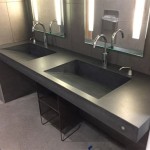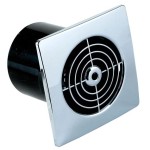How To Repair Loose Bathroom Tile
Loose bathroom tile is a common household problem that, if left unaddressed, can lead to more extensive and costly repairs. Water intrusion through the gaps created by the loose tile can damage the subfloor and surrounding wall structures, fostering mold growth and compromising the structural integrity of the bathroom. Addressing this issue promptly is essential for maintaining a safe and aesthetically pleasing bathroom environment.
This article provides a detailed, step-by-step guide on how to repair loose bathroom tile, including the necessary tools and materials, preparation procedures, and the actual repair process. The goal is to empower individuals with the knowledge and skills to tackle this project effectively, ensuring a durable and long-lasting fix.
Assessing the Damage and Gathering Supplies
Before commencing any repair work, a thorough assessment of the damage is crucial. Carefully inspect all the tiles in the affected area to identify those that are loose, cracked, or missing grout. Note the extent of the looseness – whether the tile simply wiggles slightly or can be easily lifted from the surface. This assessment will help determine the scope of the repair and the amount of materials required.
The necessary supplies for this project typically include: a utility knife or grout removal tool, a hammer, a chisel, a putty knife, thin-set mortar or tile adhesive, grout (matching the existing grout color), a grout sponge, two buckets (one for clean water and one for dirty water), safety glasses, gloves, a dust mask, and a small trowel for applying the mortar. Having these materials readily available will streamline the repair process and minimize disruptions.
The selection of thin-set mortar or tile adhesive is important. Choose a product specifically designed for use in wet environments, as bathrooms are subject to high humidity and moisture. Consider the type of tile being repaired – ceramic, porcelain, or stone – and select an adhesive that is compatible with that material. Similarly, ensure that the grout chosen matches the existing grout in terms of color and type (sanded or unsanded) to maintain a consistent aesthetic.
Preparing the Area for Repair
Proper preparation is paramount for a successful tile repair. Begin by removing any loose grout surrounding the affected tile. This can be accomplished using a utility knife or a specialized grout removal tool. Exercise caution to avoid damaging the surrounding tiles during this process. The objective is to create a clean and accessible space around the loose tile, allowing for easy removal and reinstallation.
Once the grout is removed, carefully pry the loose tile away from the surface. If the tile is firmly adhered in some areas, use a hammer and chisel to gently tap around the perimeter of the tile, loosening its bond with the underlying surface. Avoid applying excessive force, as this could damage the tile or the subfloor. Take care not to crack or break the tile during removal, especially if it is to be reused.
After removing the tile, thoroughly clean the exposed area on the subfloor or wall. Use a putty knife to scrape away any old mortar or adhesive residue. A clean and smooth surface is essential for the new mortar to adhere properly. Vacuum the area to remove any dust or debris. If there is evidence of mold or mildew, clean the area with a bleach solution (following safety precautions) and allow it to dry completely before proceeding.
Applying Mortar and Reinstalling the Tile
With the area prepared, the next step is to apply a fresh layer of mortar or tile adhesive. Follow the manufacturer's instructions for mixing the mortar, ensuring that it achieves the correct consistency – typically a smooth, paste-like texture. Avoid mixing the mortar too thin or too thick, as this can compromise its bonding strength.
Using a small trowel, apply a generous layer of mortar to the back of the tile, ensuring that the entire surface is covered. Also, apply a thin layer of mortar to the prepared surface on the floor or wall. The amount of mortar should be sufficient to create a solid bond between the tile and the underlying surface, but not so much that it oozes out excessively when the tile is pressed into place.
Carefully position the tile back into its original location, aligning it with the surrounding tiles. Press down firmly on the tile to ensure that it is securely embedded in the mortar. Use a damp sponge to wipe away any excess mortar that squeezes out from around the edges of the tile. Check the tile's level and alignment with the surrounding tiles using a level and, if necessary, gently tap the tile with a rubber mallet to adjust its position.
Grouting and Finishing Touches
Allow the mortar to dry completely according to the manufacturer's instructions, typically 24 to 48 hours. Avoid walking on or disturbing the tile during this curing period. Once the mortar is dry, the next step is to apply grout to the joints surrounding the newly installed tile.
Mix the grout according to the manufacturer's instructions, achieving a smooth, consistent texture. Using a grout float or a putty knife, apply the grout to the joints, pressing it firmly into the spaces between the tiles. Work in small sections, ensuring that all the joints are completely filled with grout. Remove any excess grout from the tile surface with the grout float, holding it at a 45-degree angle.
After the grout has slightly set, typically after about 15 to 30 minutes, use a damp grout sponge to clean the tile surface. Wring out the sponge frequently and rinse it in clean water. Use light, circular motions to remove the grout haze from the tile surface, being careful not to disturb the grout in the joints. Repeat this process several times, using a clean sponge and fresh water each time, until the tile surface is completely clean.
Allow the grout to cure completely according to the manufacturer's instructions, typically 24 to 72 hours. During this curing period, periodically dampen the grout joints with a sponge to prevent them from drying out too quickly, which can lead to cracking. Once the grout is fully cured, apply a grout sealer to protect the grout from moisture and stains. This will help prolong the life of the grout and maintain its appearance.
Finally, inspect the repaired area to ensure that the tile is secure and the grout is smooth and even. Remove any remaining debris or residue. The repaired tile should blend seamlessly with the surrounding tiles, restoring the integrity and aesthetics of the bathroom surface. Regular cleaning and maintenance will help prevent future tile problems and keep the bathroom looking its best.

How Do I Repair Tile In A Shower Ceramic

How To Repair Tile Falls Off Shower Wall Ceramic D I Y

Repair Fallen Tile Reinstall Shower With Simple Fix Re Install Bath No Grout
.png?strip=all)
How To Fix Loose Or Broken Ceramic Floor Tiles

How To Diy Repair Your Leaking Shower Without Removing Tiles United Trade Links

Collins Diy Survival Demos How To Fix A Broken Tile

How To Repair Loose Bath Tiles

Why Ed Tiles In Your Bathroom Are A Problem Shower Sealed

How To Prevent Expensive Bathroom Shower Tile And Grout Repair Promaster Home Handyman

How To Fix A Loose Tile In The Bathroom
Related Posts







